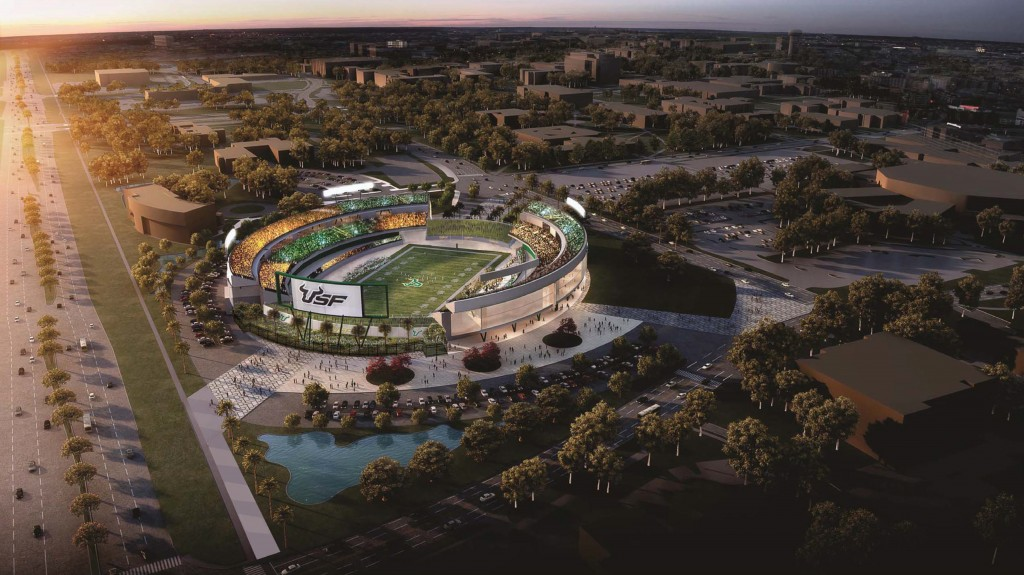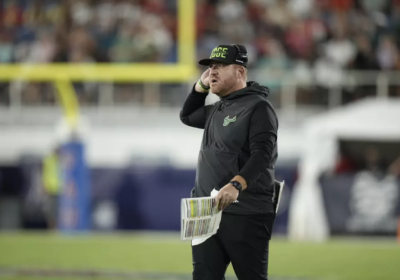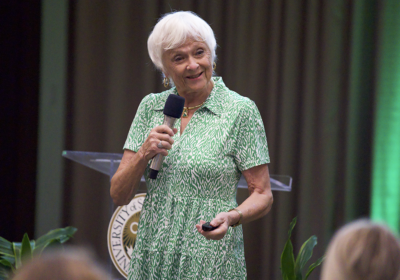BOG approves $200 million debt issuance for on-campus stadium

The Florida Board of Governors (BOG) unanimously approved a $200 million debt issuance on Friday for the construction of USF’s planned on-campus stadium.
USF will borrow the $200 million debt at an expected interest rate of 6.68%, according to the BOG’s agenda. This rate is an increase from the original 5.13% figure. However, a final interest rate will not be established until USF closes the loan with Truist Bank. This is expected to occur before Oct. 16, which is the expiration of the loan commitment.
The increased interest rate can be attributed to “volatility in interest rates in general,” according to the stadium’s project summary on the BOG’s agenda.
The expected annual debt service amounts to about $19.8 million. That number was calculated from a 7% interest rate, however, in a means to provide a cushion in case interest rates rise again before closing.
The stadium is expected to make an internal rate of return of $15.2 million in its first year, which would not be enough to cover its annual debt service. However, the university is betting on revenue growth to eventually exceed that number.
By the 10th year, the stadium is projected to make an internal rate of return of $20.3 million. That projection rises to $27.4 million by its 20th year of operations.
The university expects to pay off the loan through stadium operating revenues, such as ticket sales, concessions, merchandise and parking, and through non-stadium revenues, such as conference distribution revenues and corporate sponsorship revenues for all athletic programs.
The issuance was proposed to the USF Board of Trustees on June 13, where it passed with a 4-1 vote and advanced to the BOG. Trustee Jenifer Jasinski Schneider voted against the project, raising concerns about how the debt could put the university in a position that wouldn’t allow it to support academics and other programs outside of Athletics.
Two memos, written by the director of the state’s Division of Bond Finance J. Ben Watkins III, were released before Friday’s meeting. The memos, one released in August and the other this week, criticized the financial proposal of the project. In the most recent memo, he expressed concerns about the possibility that any disappointment in operational performance could lead to budget cuts for Athletics or require additional subsidies.
None of the director’s memos were mentioned during the meeting, and no objections were made that aligned with his points.
In addition to the $200 million debt, USF will contribute $140 million itself. The university is expected to pay this total through:
- $50 million from the USF Foundation including donations
- $31 million from Student Capital Improvement Fees
- $11.5 million from non-athletic auxiliary unreserved cash, including $8 million from parking, $2 million from food service and $1.5 million from bookstore operations
- $15 million from administrative overhead, or an annual 6% levy by the university on auxiliary expenditures
- $8 million from remaining proceeds from a 2017 Broadband Spectrum sale
- $25 million from the sale of USF’s eight 2.5 GHz Educational Broadband Services licenses, which is expected to close this fall
The news comes a day after Tampa General Hospital made a $25 million donation toward a new Athletics center. The building will become the new home for the football and women’s lacrosse teams, providing players with services such as locker rooms and strength and conditioning rooms.
Construction on the 35,000-seat stadium is expected to begin in October, according to the project summary. It will be located at Sycamore Fields at the Tampa campus.
The stadium is also expected to feature five levels – field, main concourse, club, suite and press levels. The plan will not include adding additional parking for the stadium, as USF intends to utilize its current on-campus parking garages and lots for the stadium.
Though the project has an estimated $340 million price tag, the final cost will be determined next summer. It is currently in the design phase, with architecture firm Populous and construction company Barton Malow contracted for the job.






